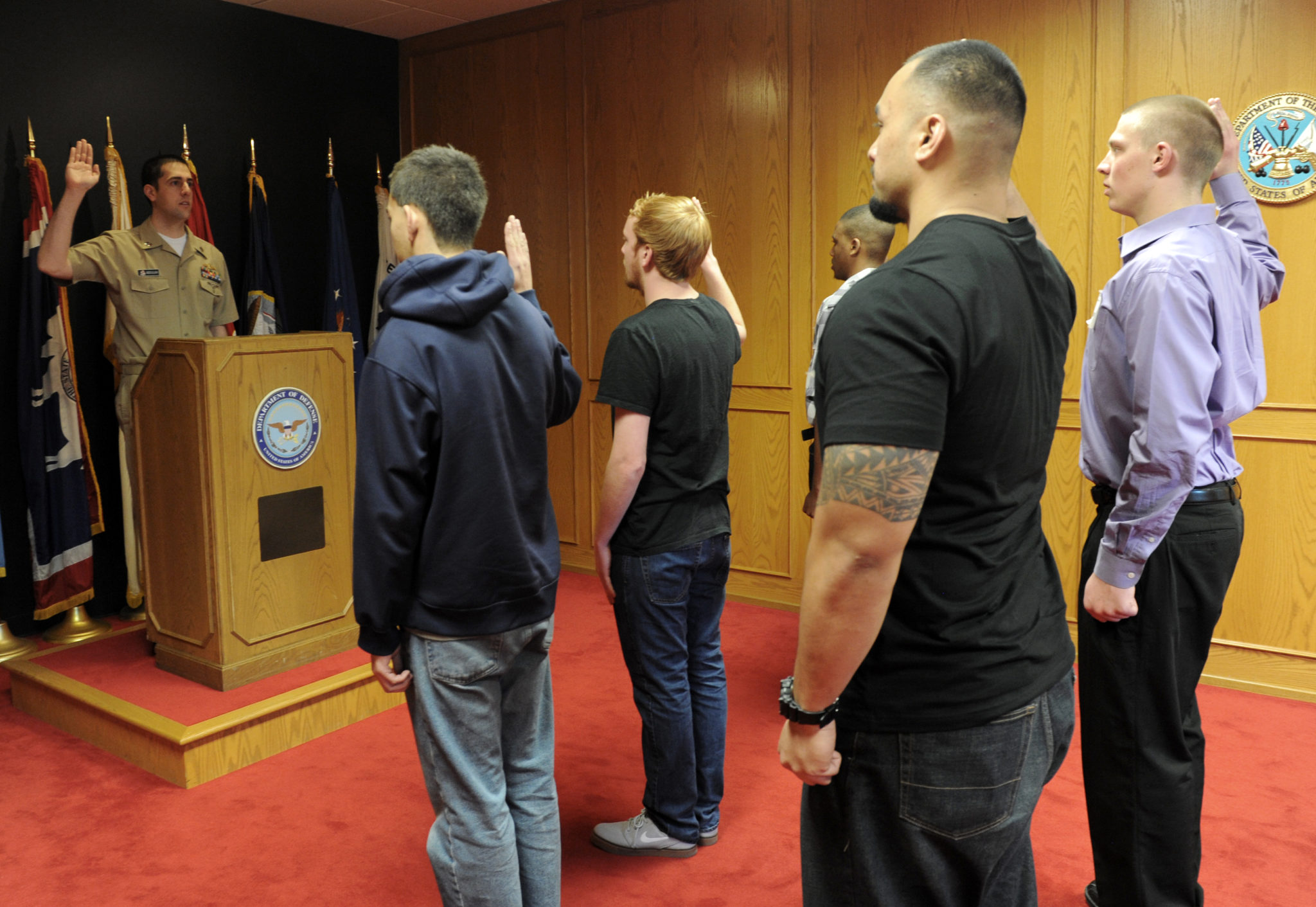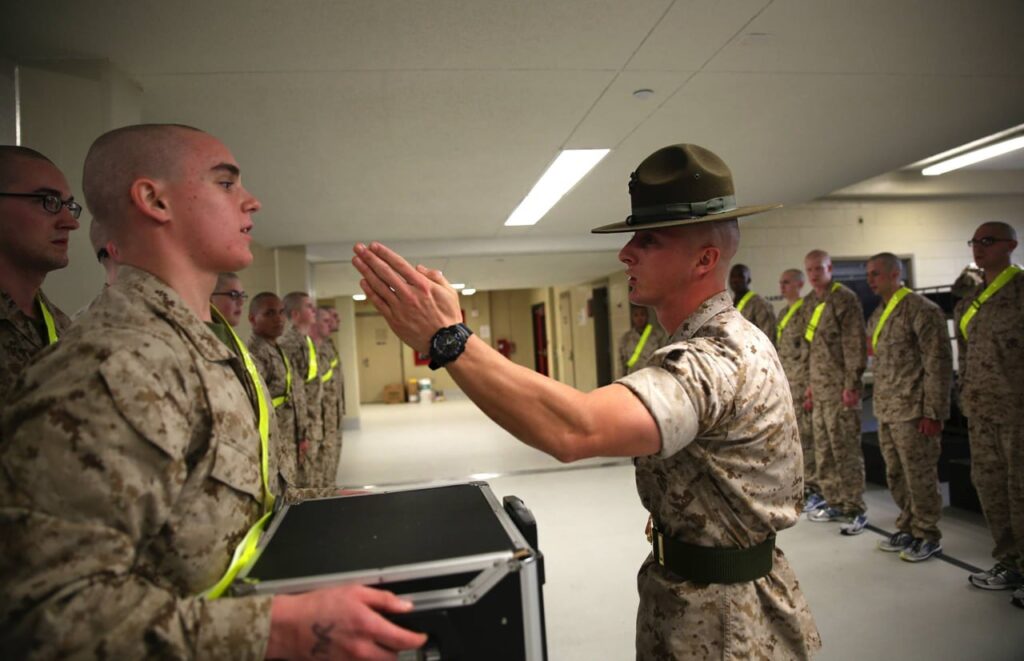
- The App
- Sandboxx News
- Resources
Learn
- Company
About
Become a Partner
Support
- The App
- Sandboxx News
- Resources
Learn
- Company
About
Become a Partner
Support
The Military Entrance Processing Stations (MEPS), are facilities owned and operated by the Department of Defense which are staffed by a mix of all five...

The Military Entrance Processing Stations (MEPS), are facilities owned and operated by the Department of Defense which are staffed by a mix of all five branches of the military, and civilian professionals. These facilities are where a prospective member of the military seeking to get into a branch of the armed forces will: take the Armed Services Vocational Aptitude Battery (ASVAB), perform the physical fitness assessment, choose a job, and lastly, swear the Oath of Enlistment, signifying their official entrance into the United States military.
The various Military Entrance Processing Stations all fall under the unified command of the United States Military Entrance Processing Command (USMEPCOM), which is headquartered in North Chicago, Illinois. USPMEPCOM’s motto is “Freedom’s Front Door,” signifying the importance that the various MEPS stations have in selecting only the most qualified individuals for service in the nation’s military. USMEPCOM was created to better coalesce the 65 Military Entrance Processing Stations spread across the United States and Puerto Rico. The 65 locations are broken down into a Western and an Eastern sector: the only states that don’t have a MEPS location within their borders are; Connecticut, Delaware, Kansas, New Hampshire, Rhode Island, Vermont, and Wyoming.

A prospective recruit will visit their local MEPS only after having sat down and talked with a recruiter from their desired branch of service in which they want to serve. When first sitting down with a military recruiter they will ask a few questions to ensure that the prospective candidate is not immediately disqualified for service in the Armed Forces. Things such as the candidate’s age, height, weight, medical history, drug use history, criminal record, citizenship status, and educational history can all have an impact on being qualified to join the U.S. military. The recruiter will have current knowledge of these various parameters and will ask the appropriate questions when determining whether or not a candidate is qualified.
If the candidate is qualified after this initial interview and questioning by the military recruiter, the next step is to take the ASVAB at your closest MEPS facility. The recruiter should let the candidate know what to wear and what to bring when conducting any business at MEPS. The ASVAB is a multiple-choice test covering four main areas of knowledge: Math, Spatial, Verbal, and Science and Technical. It usually takes about three hours to complete. The ASVAB scores will reflect the recruit’s strengths and weaknesses and will allow them to understand what jobs in the military might be the best fit.

RELATED: ALL YOU NEED TO KNOW ABOUT ASVAB SCORES
After taking the ASVAB, the recruiter will then schedule a time at MEPS for the candidate to undergo the physical examination. The physical examination is designed to identify candidates that are healthy enough for service in the Armed Forces. The physical examination consists of blood and urine tests, drug and alcohol tests, height and weight measurements, hearing exams, vision exams, medical history questionnaires and associated exams of injuries/surgeries, and specialty exams such as pregnancy tests for females.
If the recruit is deemed fit for service after passing the medical examination, the recruit will then meet with a career counselor of the respective branch they are looking to join. The counselor will go over available jobs that the candidate is qualified for based on their score on the ASVAB, the enlistment time and requirements for those jobs, potential enlistment bonuses of the various jobs, and the dates which the candidate will leave to begin basic training if they choose that job.

Once the recruit has chosen their job, enlistment paperwork will be drawn up and signed by the recruit. This paperwork will include ship date (date departing for basic training), enlistment time requirements, bonuses if applicable, and where basic and advanced training will be. A final interview will be conducted by the career counselor, fingerprinting for the FBI background check and potential security clearances will be done, and a pre-enlistment briefing will be held.
After this the recruit will be given a date on which they will take the Oath of Enlistment at MEPS. Family may attend to take pictures and share the moment with the new recruit. After taking the Oath of Enlistment, the recruit will either Direct Ship, which is where the recruit will immediately board military transportation and depart for basic training, or Delayed Entry Program (DEP) in which the recruit will come back to MEPS at a later date to begin the trip to basic training. In most cases, the Delayed Entry Program is what will occur after taking the Oath of Enlistment.

MEPS is a nationwide system of facilities designed to select and process hundreds of thousands of prospective service members into the Armed Forces. Maintaining good communication with your recruiter is key when undergoing the process of enlistment into the United States military. Showing up on time, with the correct clothing, and necessary paperwork and documents, will go a long way for prospective enlistees entering the Armed Forces in a timely manner. If you ever find yourself unsure of what to do next, what to bring, what to wear, or where to show up when going through the process of enlisting, ask your recruiter.




